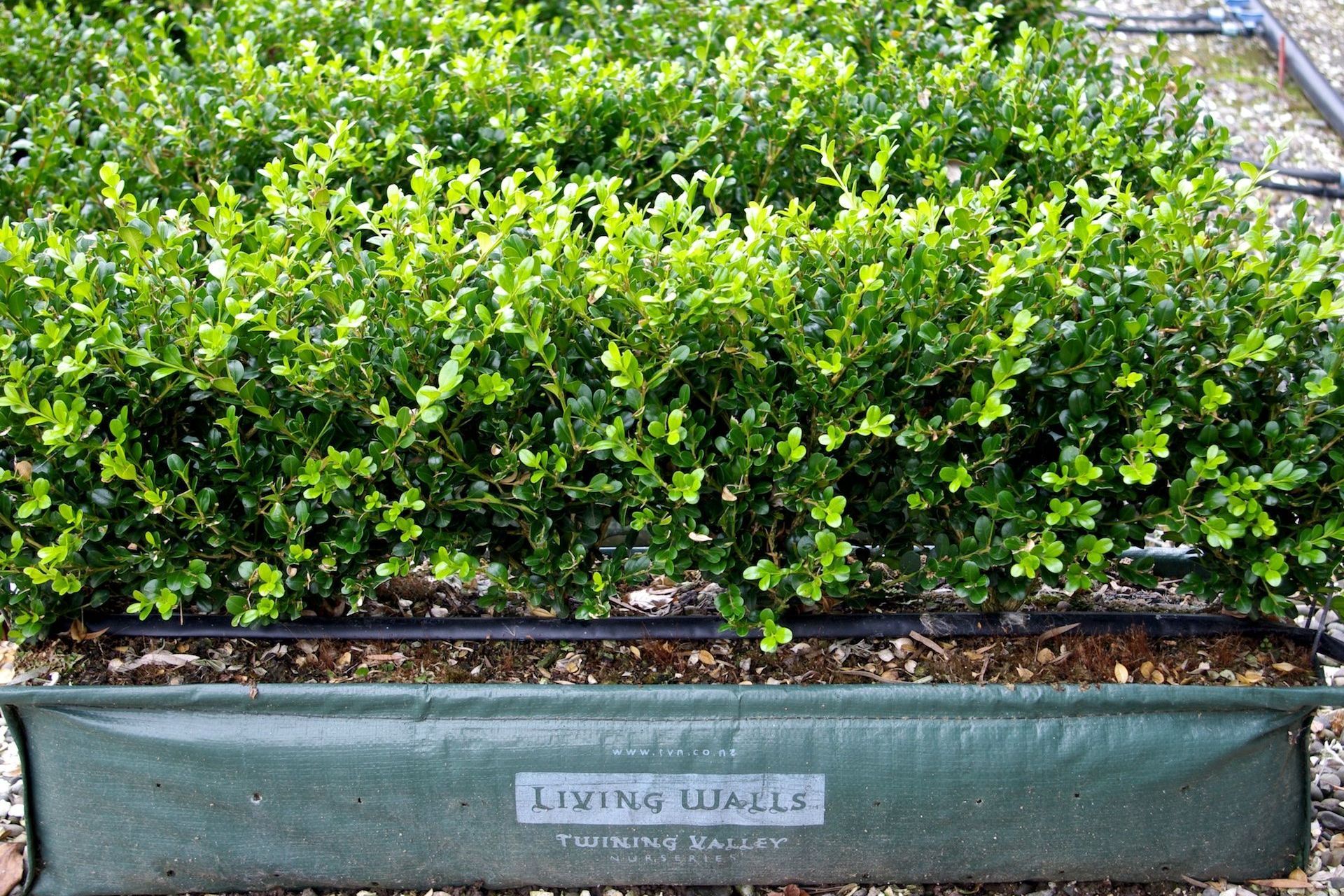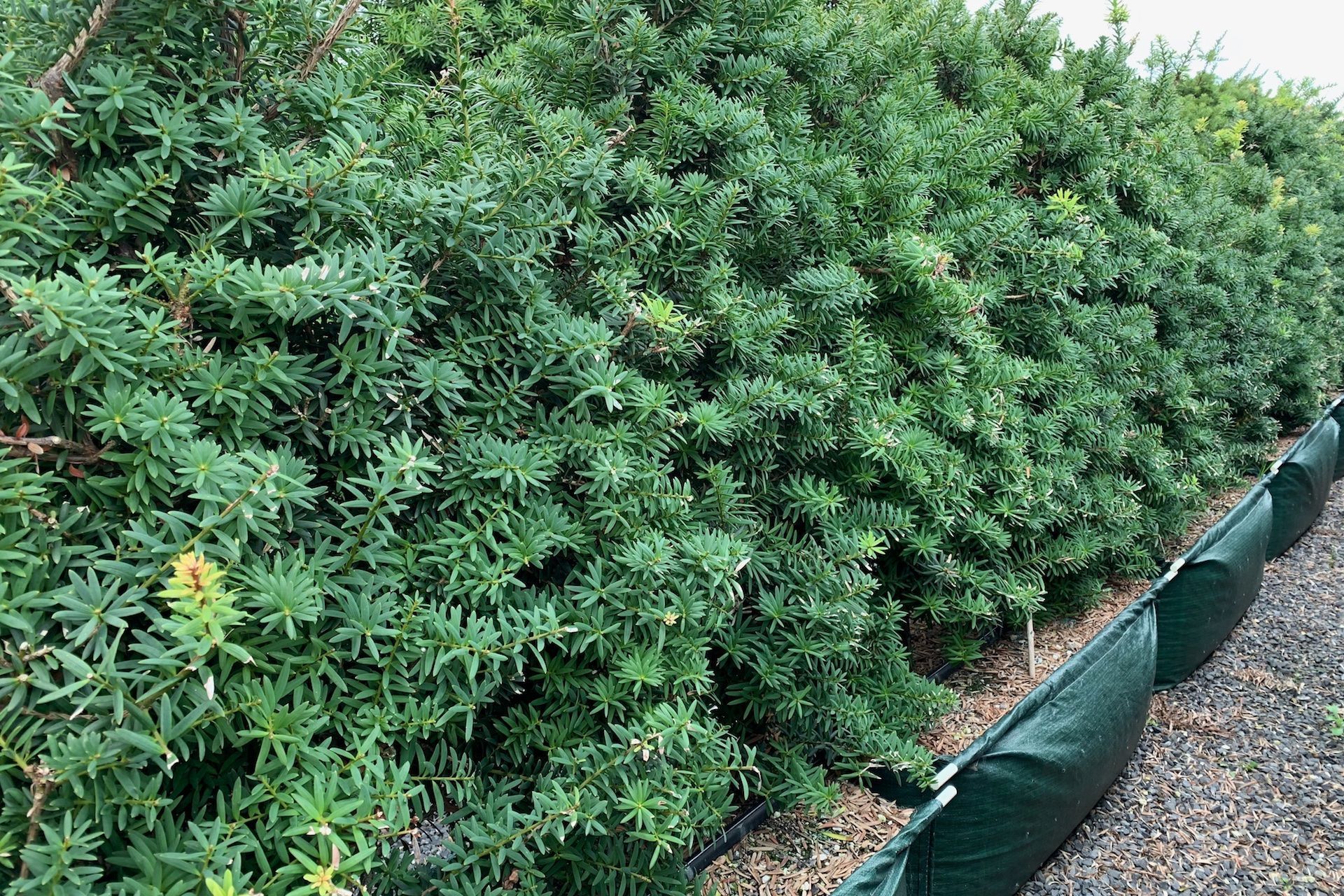9 of the best hedge plants for gardens in New Zealand
Written by
06 February 2024
•
15 min read
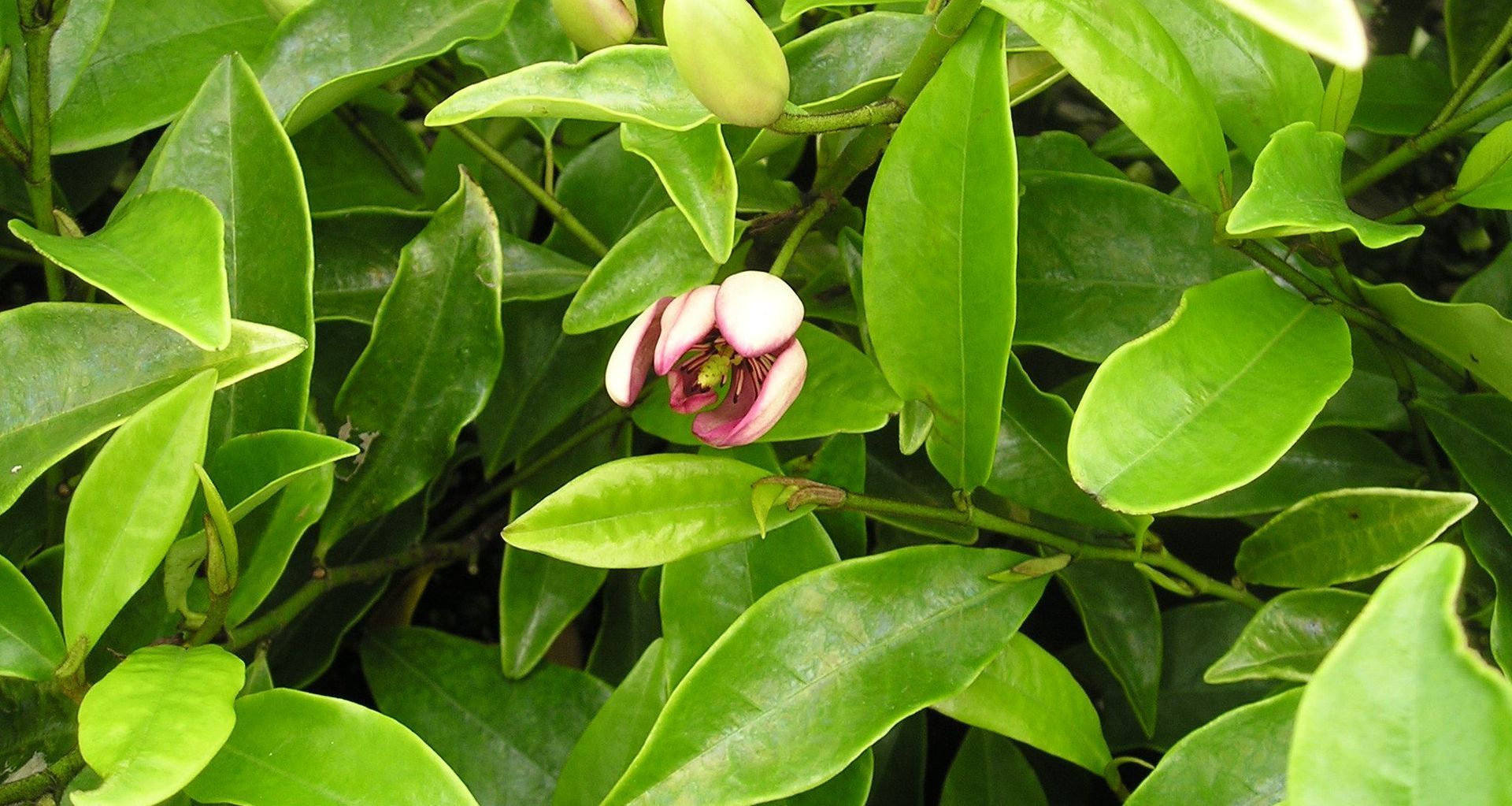
Hedges are more than just living fences; they are dynamic garden features that offer privacy, wind protection, and aesthetic appeal. From the rugged beauty of native Totara to the delicate flowers of Escallonia, we've described the key traits of the best hedges in New Zealand with planting and care tips to help them thrive in your garden and environment.
1. Corokia (Wire-netting Bush)
Corokia, also known as the "wire-netting bush" features intricate, interwoven branches, and is a popular choice for hedges and landscaping in New Zealand gardens. It is a native plant and is valued for its durability, unique texture, and ability to thrive in a variety of conditions. It's an excellent option for gardeners looking to add a distinctive and low-maintenance hedge to their outdoor spaces.
Growth and size
Corokia species can vary in size, but they generally grow to be about 1 to 3 metres tall, making them ideal for a medium-sized hedge. Some species, like Corokia cotoneaster and Corokia x virgata, can be trimmed and shaped to maintain a desired height and density, offering flexibility for those aiming for a specific aesthetic or privacy level. They also feature small yellow-shaped flowers in the spring.
Planting and care tips
- Corokia prefers full sun to partial shade so choosing a planting site that receives at least 6 hours of sunlight each day will help ensure optimal growth and foliage density.
- While adaptable to a range of soil types, it thrives in well-drained soil. Incorporating organic matter into the planting site can improve growth in areas with poor soil quality.
- Moderate watering is required to establish the plants, particularly during dry spells. Once established, however, Corokia is relatively drought-tolerant.
- A balanced, slow-release fertiliser in early spring will support healthy growth throughout the growing season.
- Regular pruning is essential to maintain the desired shape and density of a Corokia hedge. It responds well to trimming, so don't hesitate to shape it as needed.
- When planting for Corokia, 50cm to 1 metre apart usually allows enough room for growth while ensuring a dense hedge. As with all hedges, this may vary from species to species so it pays to check first.
Related article: 10 fantastic fast-growing evergreen trees in New Zealand
2. Buxus (Boxwood)
Buxus, also called Boxwood, is a favoured hedge plant in New Zealand for its dense, evergreen shrub foliage and ability to form crisp, formal lines. It's an excellent choice for creating borders and pathways, or as a garden feature on its own. Buxus is favoured for its versatility, slow growth rate, and ease of maintenance.
Growth and size
Buxus varieties can vary significantly in size, but most species for hedges, such as Buxus sempervirens (Common Box), typically grow to about 1 to 2 metres in height. Their slow growth rate means they are easy to maintain at a desired height and shape through regular pruning.
Planting and care tips
- Buxus performs well in both full sun and partial shade, although too much shade can lead to less dense foliage. It's versatile enough to thrive in a variety of locations, from sunny borders to shaded underplantings.
- Well-drained soil with a neutral to slightly alkaline pH is recommended. Incorporating compost and sheep pellets into the planting hole can enhance growth, especially in poor soils.
- Freshly planted Buxus requires consistent moisture to establish a strong root system. Once established, it is relatively drought-tolerant with only occasional watering required during dry spells.
- A balanced, slow-release fertiliser in early spring is recommended to encourage healthy growth. Additional feeding with a nitrogen-rich fertiliser can be beneficial in mid-summer to promote lush foliage.
- To maintain a tidy hedge, prune in late spring after the first flush of growth, and again in late summer to shape it before growth slows down in the fall.
- A layer of organic mulch around the base of Buxus helps retain soil moisture, suppress weeds, and maintain a cooler root environment.
- For a dense Buxus hedge, space plants about 20-30cm apart. This allows the plants to grow together and form a solid barrier without overcrowding.
3. Michelia Figo (Port Wine Magnolia)
Michelia Figo, commonly known as the Port Wine Magnolia, is an attractive option for hedging plants, especially for those looking to add a fragrant, evergreen hedge. It is noted for its glossy green leaves and small, creamy-yellow and purple flowers that emit a strong, sweet banana-like fragrance, particularly in the warmer months. This plant is part of the Magnolia family and offers both aesthetic appeal and sensory pleasure, effective as a privacy-enhancing boundary or backdrop in a garden.
Growth and size
Michelia Figo can grow to a height of 2 to 3 metres, with a similar spread, making it suitable for medium-sized hedges. Its growth rate is moderate, allowing for relatively easy shaping and maintenance. The plant forms a dense, bushy hedge, providing excellent privacy and wind protection when mature.
Planting and care tips
- This evergreen shrub prefers a position in full sun to partial shade. Although it can tolerate a wide range of light conditions, flowering is best with ample sunlight.
- Michelia Figo thrives in well-drained, fertile soil. It prefers slightly acidic to neutral pH levels. Enriching the planting site with compost or well-rotted organic matter can promote vigorous growth.
- Regular watering is important, especially during the establishment period and in dry spells. However, the plant does not like waterlogged conditions, so ensure good drainage.
- A balanced, slow-release fertiliser like blood and bone in early spring and again in summer WILL support growth and flowering.
- Prune in late winter or early spring to maintain shape and encourage bushier growth. Michelia Figo responds well to light pruning, making it easy to shape as a hedge. This can also help produce more flowers.
- For a dense hedge, plant Michelia Figo approximately 1 metre apart as this allows for individual plants to grow together and form a continuous hedge without overcrowding.

4. Pittosporum
Pittosporum is highly versatile and prolific in New Zealand, with a wide range of species and varieties that offer different sizes, leaf colours, and textures. Known for its fast growth rate, ease of maintenance, and ability to provide dense, attractive screening, Pittosporum can meet various landscaping needs, from formal hedges to informal garden dividers.
Growth and size
Pittosporum species vary in size, but many are suitable for hedges ranging from 1 to 5 metres in height. Some common species used for hedging include Pittosporum tenuifolium and its many cultivars, such as 'Silver Sheen', which is appreciated for its silvery-green, shimmering leaves and compact growth habit.
Planting and care tips
- Most Pittosporum species prefer full sun to partial shade. They are adaptable to a range of light conditions but will be denser and more floriferous in better light.
- These plants are not particularly fussy about soil type but thrive best in well-drained soil. They can tolerate both acidic and alkaline pH levels, making them suitable for various garden settings.
- Regular watering is important during the first few growing seasons to establish a deep, extensive root system. Once established, Pittosporum is relatively drought-tolerant, although occasional deep watering can promote healthier growth.
- Applying a general-purpose garden fertiliser in early spring can encourage lush foliage and healthy growth. An additional feeding in mid-summer can support continued vigour, especially for hedges that are pruned regularly.
- Pittosporum responds well to pruning and can be trimmed to maintain a neat, dense form. Pruning in late spring, after the main growth flush, and again in late summer, can help shape the hedge and encourage branching, resulting in a thicker barrier.
- Applying a layer of organic mulch around the base of the hedge can help conserve soil moisture, suppress weeds, and provide nutrients as it decomposes.
- When planting a Pittosporum hedge, spacing between plants should be based on the mature width of the chosen variety. For a dense hedge, spacing plants approximately 1 metre apart is typical, but this can vary with the species and desired hedge thickness.
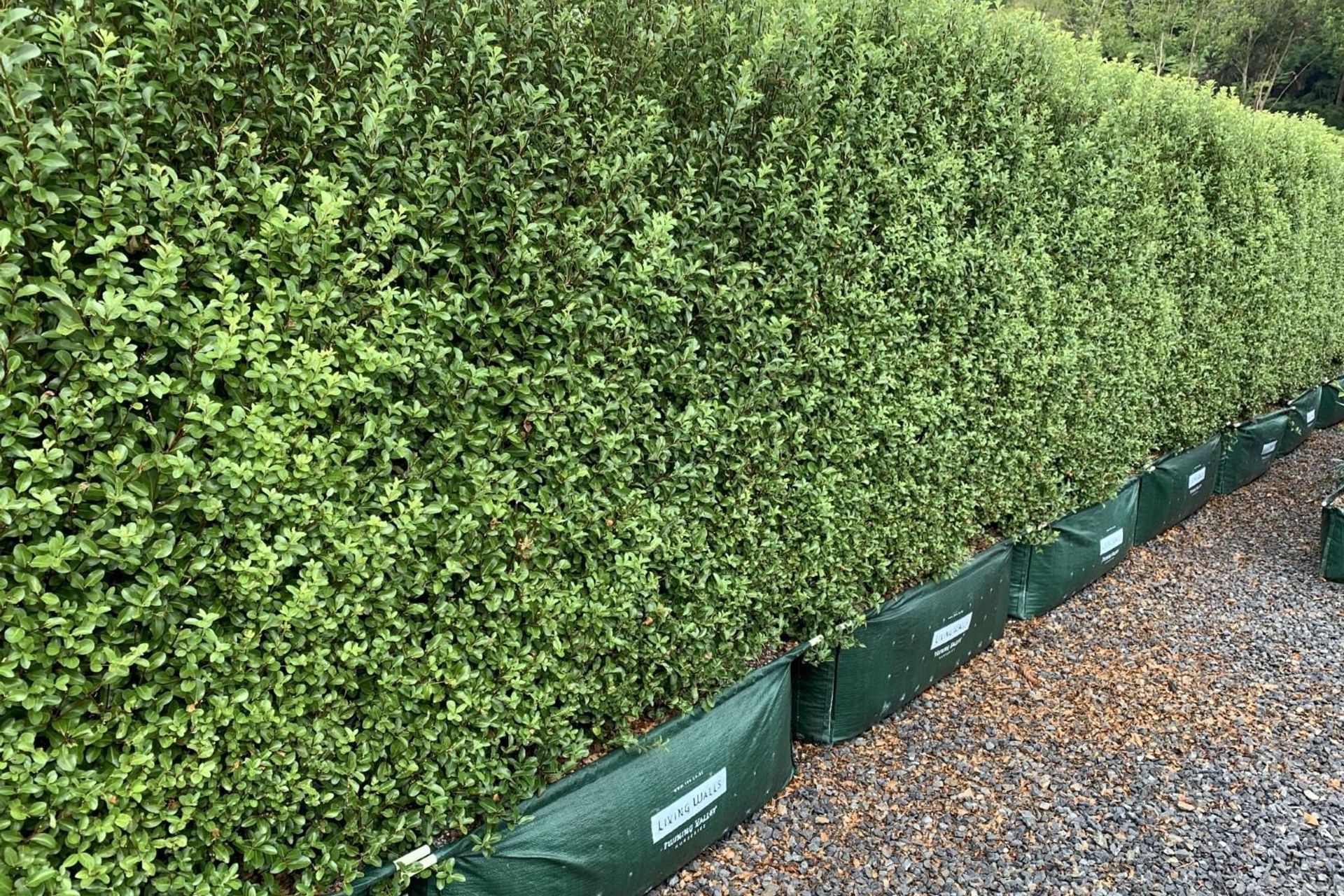
5. Griselinia
Griselinia is known for its lush, evergreen foliage, rapid growth rate, and resilience to a range of conditions, including coastal exposure. Griselinia littoralis, often referred to as Kapuka or New Zealand Broadleaf, is particularly favoured for its dense growth and attractive, light green leaves, which make it an excellent option for privacy screens or shelter belts in gardens and landscapes.
Growth and size
Griselinia littoralis can grow up to 10 - 20 metres tall or more, but it is often maintained at a height of 2 to 8 metres for hedge purposes. Its growth rate is relatively fast, making it an ideal choice for gardeners looking to establish a hedge quickly. With proper care and pruning, Griselinia can be shaped into a dense and uniform hedge.
Planting and care tips
- Griselinia prefers full sun to partial shade. It thrives in a variety of light conditions but will produce the densest growth and best leaf colour in well-lit environments.
- This plant is adaptable to a wide range of soil types but performs best in well-drained, fertile soil. It is relatively tolerant of different soil pH levels, from acidic to slightly alkaline.
- Regular watering is crucial during the first few years to establish a deep root system, especially in dry periods but, once established, Griselinia is quite drought-tolerant.
- A general-purpose fertiliser, applied in spring, will encourage vigorous growth. A slow-release formula is ideal for providing steady nutrients throughout the growing season.
- Griselinia responds well to pruning, which should be done at least once a year to maintain the desired shape and density.
- For a dense hedge, Griselinia plants should be spaced about 75cm to 1 metre apart.
Related article: 11 terrific trees for small gardens in New Zealand
6. Totara
Totara is an iconic New Zealand native known for its majestic stature, durability, and cultural significance. While it is more commonly recognised and seen in native forests, parks, and large landscapes, Totara can also be cultivated as a hedge in gardens, provided there is sufficient space for its growth. This choice is somewhat unconventional due to its potential to grow into a large tree, but with regular pruning and maintenance, it can be formed into a robust, evergreen hedge.
Growth and size
In its natural habitat, Totara can grow to be a massive tree, reaching heights of over 30 metres. However, when pruned and maintained as a hedge, it can be kept at a more manageable height. The key to using Totara as a hedge is to start with regular pruning early in its life to control its size and encourage dense growth. As a hedge, it can be maintained at a desired height, often between 2 to 5 metres, depending on the gardener's preference.
Planting and care tips
- Totara prefers full sun but can tolerate partial shade. It thrives in a range of environments but performs best in well-lit areas.
- It is adaptable to a wide variety of soil types but prefers well-drained soil. Totara can grow in soils ranging from clay to sandy, from acidic to alkaline.
- Young plants need regular watering to establish a deep and robust root system, but thereafter, they are relatively hardy with only occasional watering required.
- While Totara is not particularly demanding regarding soil fertility, providing nutrients can help enhance its growth and density as a hedge.
- To maintain Totara as a hedge, regular pruning is essential to control the size and encourage dense foliage.
- When planting Totara for a hedge, spacing them too closely can lead to competition for resources, so a distance of about 1 to 2 metres between plants is recommended for hedge cultivation.
7. Camellia
Camellias make fantastic flowering hedges offering lush foliage and spectacular blooms that range in colour from white and pink to deep red. They are also evergreen shrubs that can provide year-round interest and have a strong reputation for thriving in a variety of climates and settings, making them suitable for many garden styles.
Growth and size
The growth and size of Camellias can vary significantly depending on the species. Commonly used species for hedges include Camellia sasanqua, which tends to be more sun-tolerant and blooms from autumn to winter, and Camellia japonica, known for its larger, spring-blooming flowers. As a hedge, Camellias can be maintained at various heights, typically ranging from 1 to 3 metres, but some species can grow taller if left unpruned.
Planting and care tips
- Camellias generally prefer partially shaded positions, particularly those that offer protection from the afternoon sun. However, Camellia sasanqua varieties are more tolerant of full sun.
- They thrive in well-drained, acidic soil rich in organic matter. Incorporating compost or peat moss into the planting hole can help create the ideal growing conditions.
- Regular watering is crucial, especially during the first few years of growth and in dry periods. Camellias prefer evenly moist soil but are susceptible to root rot in waterlogged conditions.
- Use an acid-formulating fertiliser in late winter or early spring before new growth begins. Avoid high-nitrogen fertilisers late in the season, as they can inhibit flowering.
- Pruning is best done after blooming ends to shape the hedge and encourage bushier growth. Camellia sasanqua can be pruned more heavily than Camellia japonica if needed, as it tolerates trimming well.
- For a dense hedge, space Camellia plants 1 to 2 metres apart, depending on the variety and the desired final density of the hedge.
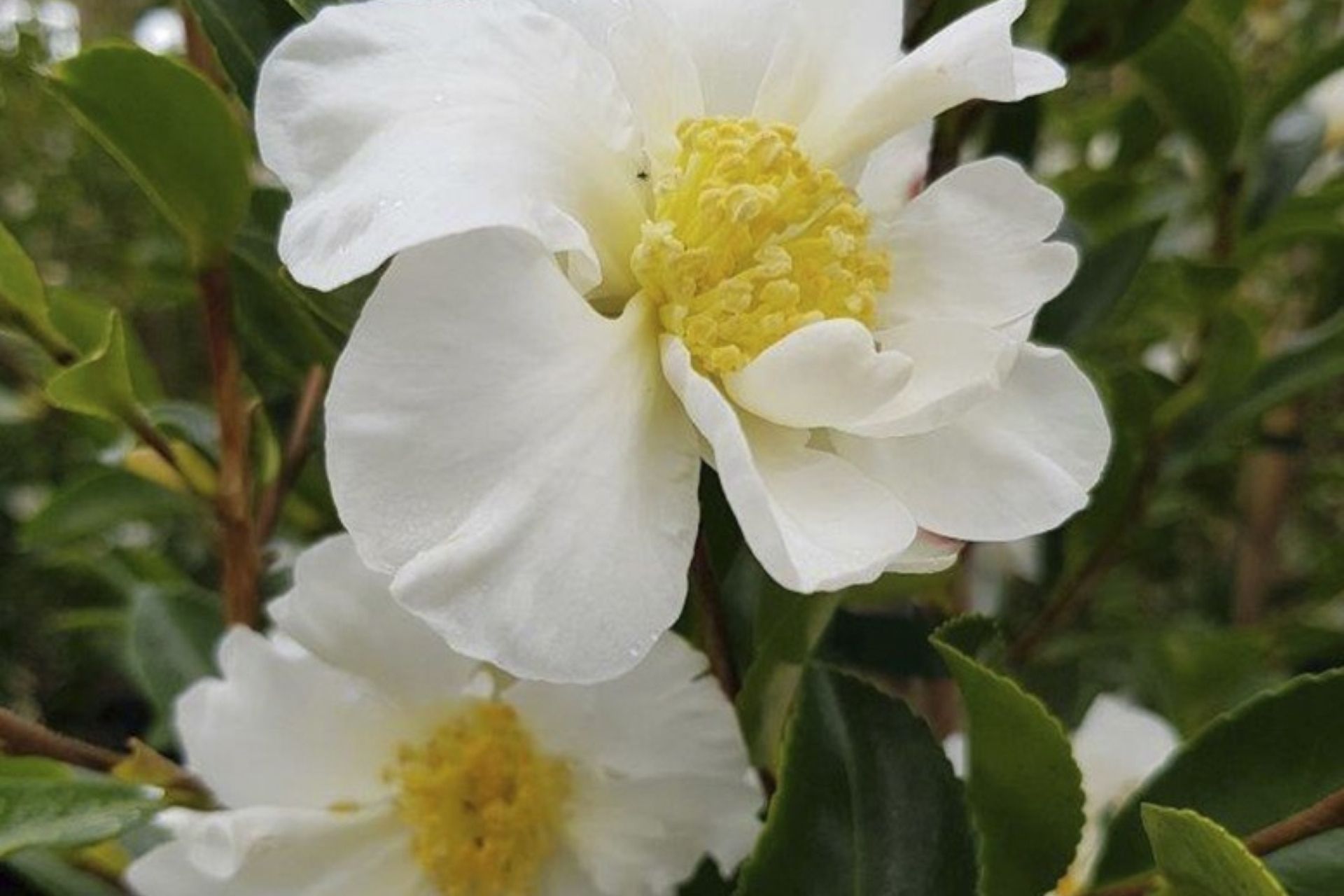
8. Coprosma (Mirror Bush)
Coprosma, often called the "mirror bush" for its glossy, reflective dark green leaves, is a versatile and robust hedge. Known for its vibrant appearance, it can feature dark green foliage to variegated golds, pinks, and even blacks. Coprosma provides year-round interest and is particularly valued for its ability to withstand harsh conditions, including coastal exposure and drought once established.
Growth and size
The height of Coprosma hedges can vary significantly, with many varieties reaching 1 to 3 metres in height. Some of the smaller species are perfect for low borders, while larger varieties can be used for more substantial privacy screens. Their growth rate is generally moderate, allowing for relatively easy maintenance and shaping.
Planting and care tips
- Coprosma thrives in full sun to partial shade, with many varieties preferring brighter conditions to enhance the colouration of their foliage.
- These hedging plants are adaptable to a wide variety of soil types but perform best in well-drained conditions. They can tolerate both acidic and alkaline soils, making them quite versatile in landscape design.
- While Coprosma is drought-tolerant once established, regular watering during the first few growing seasons will help to establish a robust root system.
- Applying a balanced, slow-release fertiliser in spring to support healthy growth throughout the season. Additional feeding is usually not necessary, but plants can benefit from a top-up in mid-summer, especially in poorer soils.
- Coprosma responds well to pruning and can be shaped easily to maintain the desired hedge height and density. Pruning is best done in late winter or early spring before new growth begins.
- For a dense hedge, spacing between Coprosma plants will depend on the specific variety's mature width. Generally, spacing plants approximately 50cm to 1 metre apart allows for dense growth and coverage.

9. Escallonia
Escallonia is an attractive and versatile shrub that makes an excellent hedge, celebrated for its dense, glossy foliage and profusion of flowers, typically in shades of pink, red, or white. It's a popular choice for coastal areas due to its salt tolerance and is equally at home in urban or rural settings, providing a vibrant and resilient boundary or screen.
Growth and size
Escallonia varieties can vary in size, but most grow to between 1.5 to 3 metres in height, making them suitable for medium-sized hedges. Their growth rate is moderate to fast, allowing for quick establishment and filling in of hedges.
Planting and care tips
- Escallonia thrives in full sun but can tolerate partial shade. However, flowering is more abundant in sunnier positions. It's well-suited to exposed sites and coastal conditions, thanks to its wind and salt spray tolerance.
- This plant prefers well-drained soil and is quite adaptable to different soil types, although it flourishes in soils that are moderately fertile and slightly acidic to neutral in pH.
- Regular watering is necessary for newly planted Escallonia, however, once established it becomes quite drought-tolerant. Consistent moisture will promote healthier growth and more abundant flowering.
- Apply a general-purpose fertiliser in spring to encourage lush foliage and support flowering. A mulch of well-rotted organic matter can also benefit plant health and soil condition.
- Escallonia is very responsive to pruning, which helps maintain its shape and encourages dense growth. Prune in late winter or early spring to remove any dead or damaged growth and to shape the hedge.
- When planting Escallonia for a hedge, space plants approximately 1 metre apart. This allows enough room for the plants to grow and fill in the space, creating a dense, flowering hedge.
Related article: Landscape design tips and strategies to help you create your dream garden
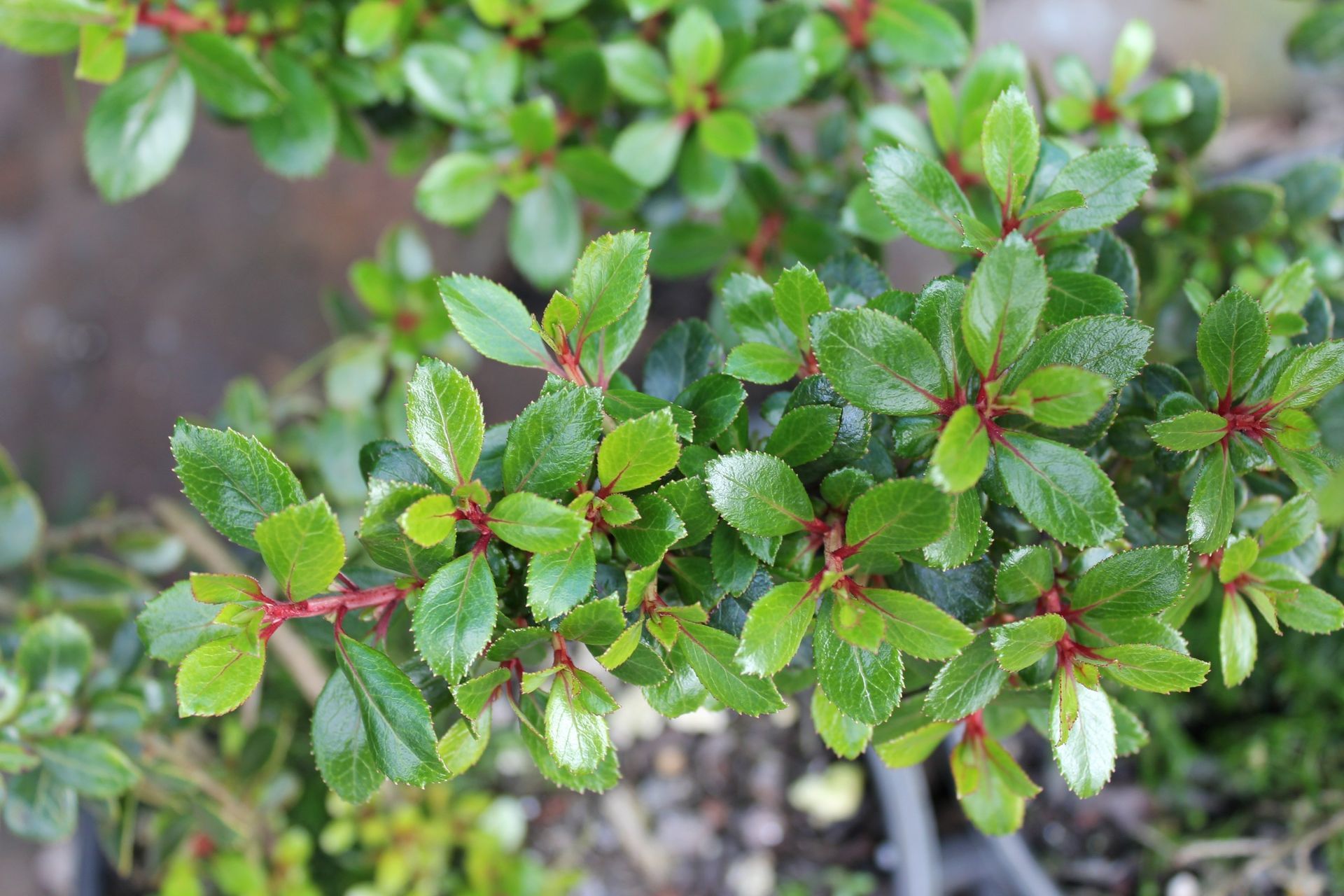
The best hedge plants in New Zealand
With the best hedge plants in New Zealand described and tips to help them thrive, you're now in a great position to make the perfect choice for your garden. Whether it's one of the fast growing options like the Pittosporum or something offering a bit of colour like the Camellia, you'll have no trouble finding something that will work for you now, and for years to come.

